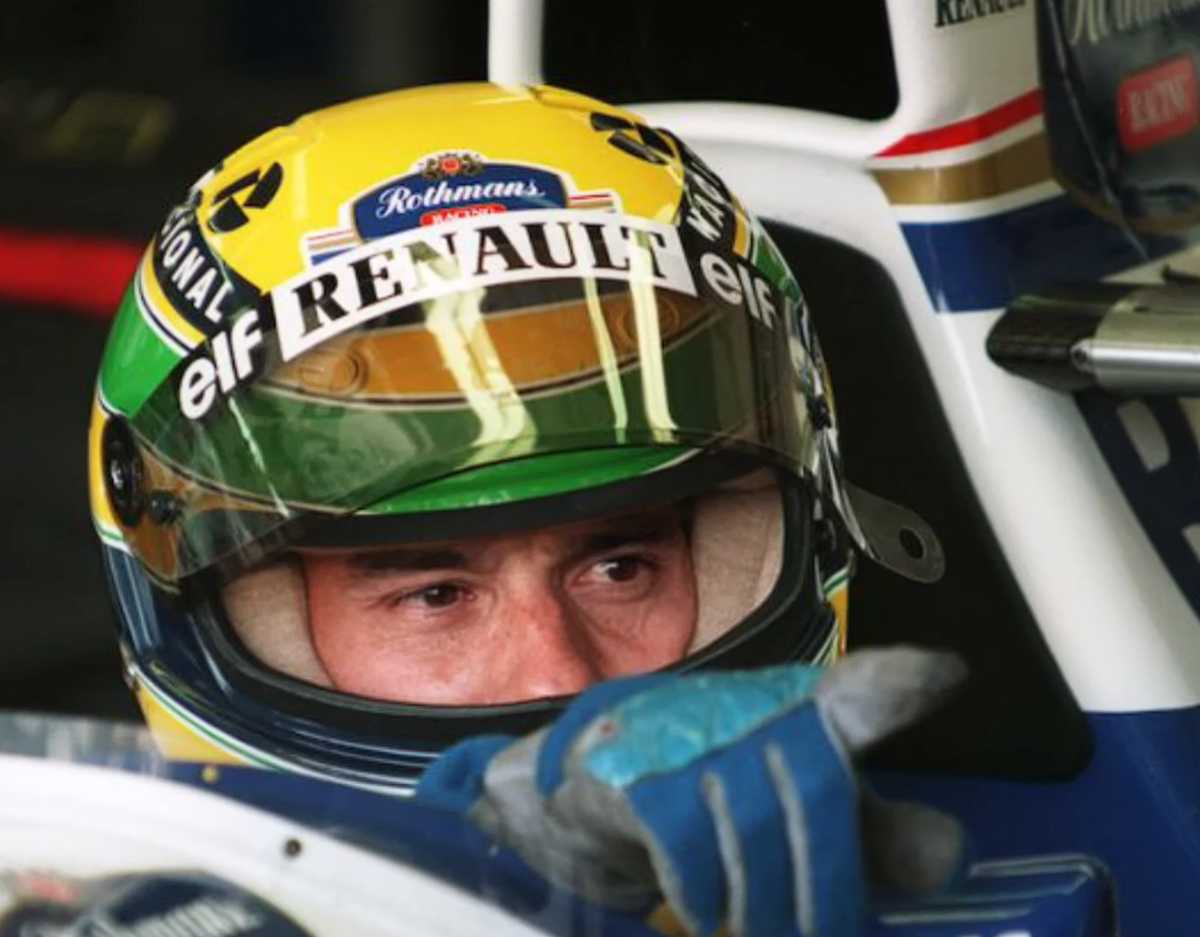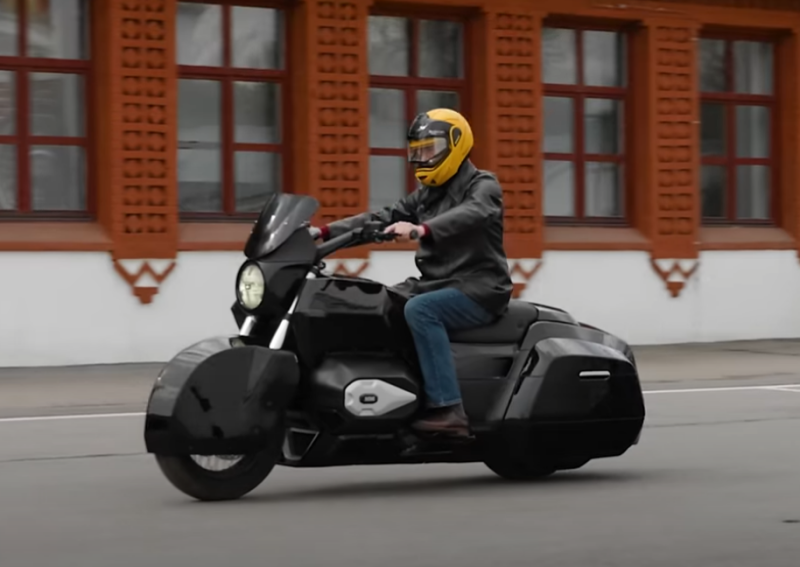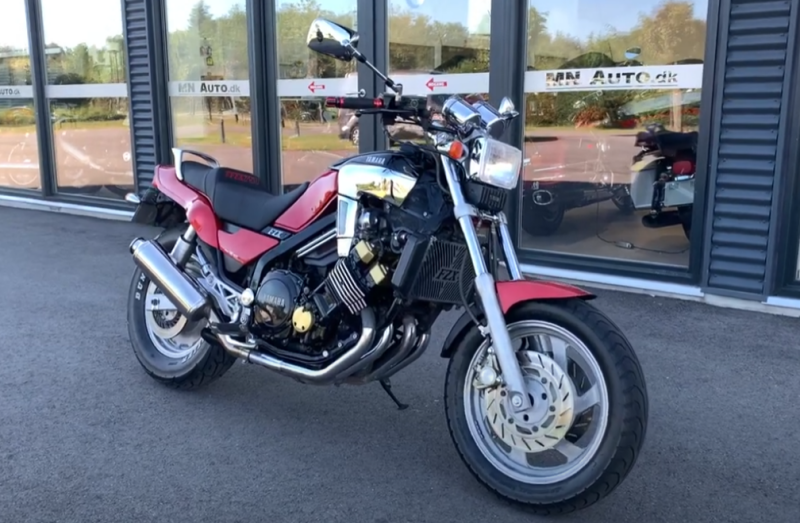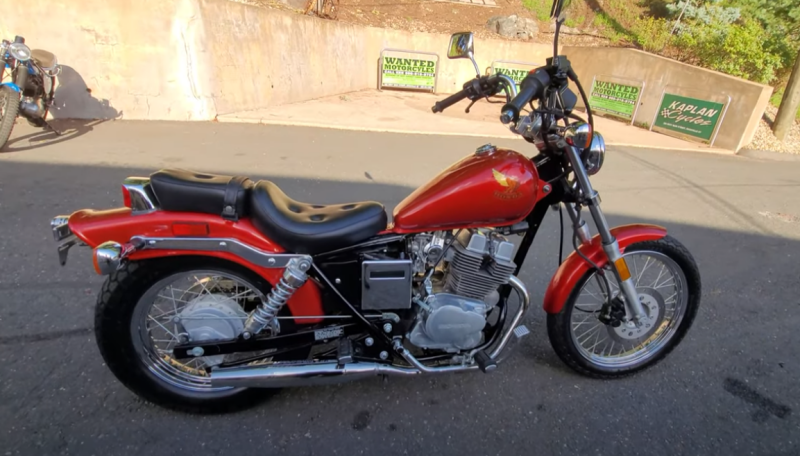Having been in a severe accident in 1986, and having lost the ability to walk, Iron Frank soon returned to managing the racing team. The Japanese from Honda, who at that time supplied engines to the Williams team, considered that Williams would no longer be able to work at the same level, and switched to McLaren. As a result, in 1988, Williams was left without competitive engines, and failed from first place in the Constructors' Championship, to seventh!
 Williams FW14B Renault. Photo: Youtube.com
Williams FW14B Renault. Photo: Youtube.comBut in 1989, Frank Williams managed to conclude a contract with the French engine manufacturer Renault. This deal was the foundation of the revival of Williams. Another factor in the rise of the Iron Frank team was the hiring of little-known aerodynamicist Adrian Newey in the late 1990s. Many riders, including Alain Prost, were surprised by the high speed of the March cars in the corners - no one understood why they were so fast. And the chest opened simply: March was designed by Adrian Newey! Therefore, the invitation of an Englishman to the role of aerodynamicist in Williams was no less an investment in the future than a contract with Renault.
Senna crossing
Ayrton made his first serious attempt to move to Williams back in 1991. Even then it was obvious that the Williams chassis is superior to the McLaren, and the Renault engine, although inferior to the Honda in peak power, gives an advantage in accelerating dynamics due to elasticity.
Then Ayrton decided to remain loyal to the Japanese, and rejected Frank's offer, which he later probably regretted! The second time the initiative came from Senna, and this happened exactly one year after the events described above. Two developments contributed to the renewal of mutual interest.
First, in Italy, Frank Williams and Nigel Mansell announced that they could not reach an agreement on a new contract, which meant that the place of the first Williams pilot became vacant!
Secondly, after a couple of weeks, Honda announced that it would leave Formula 1 at the end of the season.
 Williams vs McLaren, Mansell vs Senna. Photo: Youtube.com
Williams vs McLaren, Mansell vs Senna. Photo: Youtube.comThe only way to win the World Championship was to sign a contract with Frank Williams! Attempts to take a place behind the wheel of the Williams were made by the two main “bears” of the World Cup: Prost and Senna. The Frenchman won this fight, even though Ayrton agreed to play for Williams for free! But at the end of 1993, the Brazilian lobby outweighed - Prost was fired, and Senna took his place.
Amendment of the regulations
Before the 1994 season, major changes took place in the technical regulations of Formula 1.
All auxiliary electronics were banned, such as:
✅ Traction control, or traction control system.
✅ ABS (anti-lock braking system)
✅ Automatic gear shifting in the checkpoint.
✅ Active suspension.
✅ Launch control (start system)
Technique
The aerodynamic concept of Williams FW14 was to ensure the maximum free passage of air under the bottom, and into the diffuser. But unlike fans of the "snub nose concept", Newey believed that it would be enough to raise the floor under the front suspension.
Therefore, the nose cone of those Williams in profile resembled a banana, hence the name: banana nose cone. Since Adrian Newey professed an evolutionary approach to refinement, only an attentive fan will notice the difference between the Williams of 1991 and 1993, and even then the side numbers and sponsor stickers are the first to catch the eye.
 Adrian Newey and Patrick Head: the main developers of Williams. Photo: Youtube.com
Adrian Newey and Patrick Head: the main developers of Williams. Photo: Youtube.comSo the FW16 model, on which Ayrton Senna performed, was an evolutionary development of the 14 FW1991. Adrian Newey continued to improve the masterpiece, and it seemed that even the ban on control electronics would not affect the balance of power in the World Championship. But this time, Newey was wrong: the 1994 Williams turned out to be a badly driven and extremely unstable car. Even Damon Hill, who knows the secrets of tuning this machine like no one else, looked confused!
Causes of Newey's "fail"
Definitely affected the use of active suspension, leveling the shortcomings of both aerodynamics and chassis. In fact, then Williams faced a long-forgotten remnant of the "ground effect" - dolphins. The essence of this phenomenon is that the downforce generated by the bottom of the car is so great that the suspension can not stand it, and the car "falls" on the "belly". After that, the air flow is interrupted, the car loses downforce, and jumps up!
Active suspension could have completely suppressed such an unpleasant Williams trait, but before the 1994 season it was banned. According to Newey, this was the problem of the "passive" FW16, but it was not possible to localize it in the wind tunnel. But watching the car during the tests on the track, Adrian was surprised to notice that in some places the FW16 starts to jump! Bingo - the solution to the problem was found, and was to reduce the downforce generated by the bottom.
May 1, 1994, scene: Imola
At the start of the San Marino Grand Prix, the front row was occupied by Senna and Schumacher. After a green light, the Williams and Benetton pilots take off to find out who is the best: Senna manages to maintain the lead.
But the race did not work out from the start: the second Benetton of Finnish driver Lehto could not start, and Lotus Pedro Lamy flew into it. Luckily, there were no casualties in this accident.
 Grand Prix of San Marino 1994. Senna leads, Schumacher second. Photo: Youtube.com
Grand Prix of San Marino 1994. Senna leads, Schumacher second. Photo: Youtube.comSurprisingly, after such a blockage, the judges decided not to stop the race, but released the safety car, already forgotten in Formula 1, onto the track. And not a supercar, as it is now, but a standard Opel Vectra! Formula 1 cars should not drive so slowly: the tires begin to cool down seriously, which leads to a decrease in pressure, and therefore a decrease in ground clearance. And the FW16 was extremely sensitive to the clearance!
For Ayrton Senna's Williams FW16, this was a fatal circumstance. After the restart, on the seventh lap of the race, in the Tamburello corner, the Wizard's car struck the bottom of the asphalt, and ... that's it.
Aftermath
The 1994 San Marino weekend saw increased passive safety in Formula One and motorsport. First of all, the side protection of the head of the riders appeared, because before the head and shoulders of the pilots were not protected, except for the helmet, of course. Secondly, the design of the bottom has been changed: a “slip board” has appeared under it, which helps to control the ground clearance. This was done to reduce the downforce and the speed of the cars. Thirdly, the tracks were made safer: the departure zones were increased in many places, the protective barriers made of tires were strengthened.
 Ayrton Senna. Photo: Youtube.com
Ayrton Senna. Photo: Youtube.comAs is often the case, one life saved many.
What about Williams FW16?
Adrian Newey made changes to the design: he shortened the side pontoons, in front of which he placed deflectors, and Williams went: Damon Hill, sometimes, fought on equal terms with Michael Schumacher, and until the last race. Probably, the FW16 with the Wizard at the wheel would have easily managed to get ahead of Schumacher's Benetton. But history does not know the subjunctive mood.










